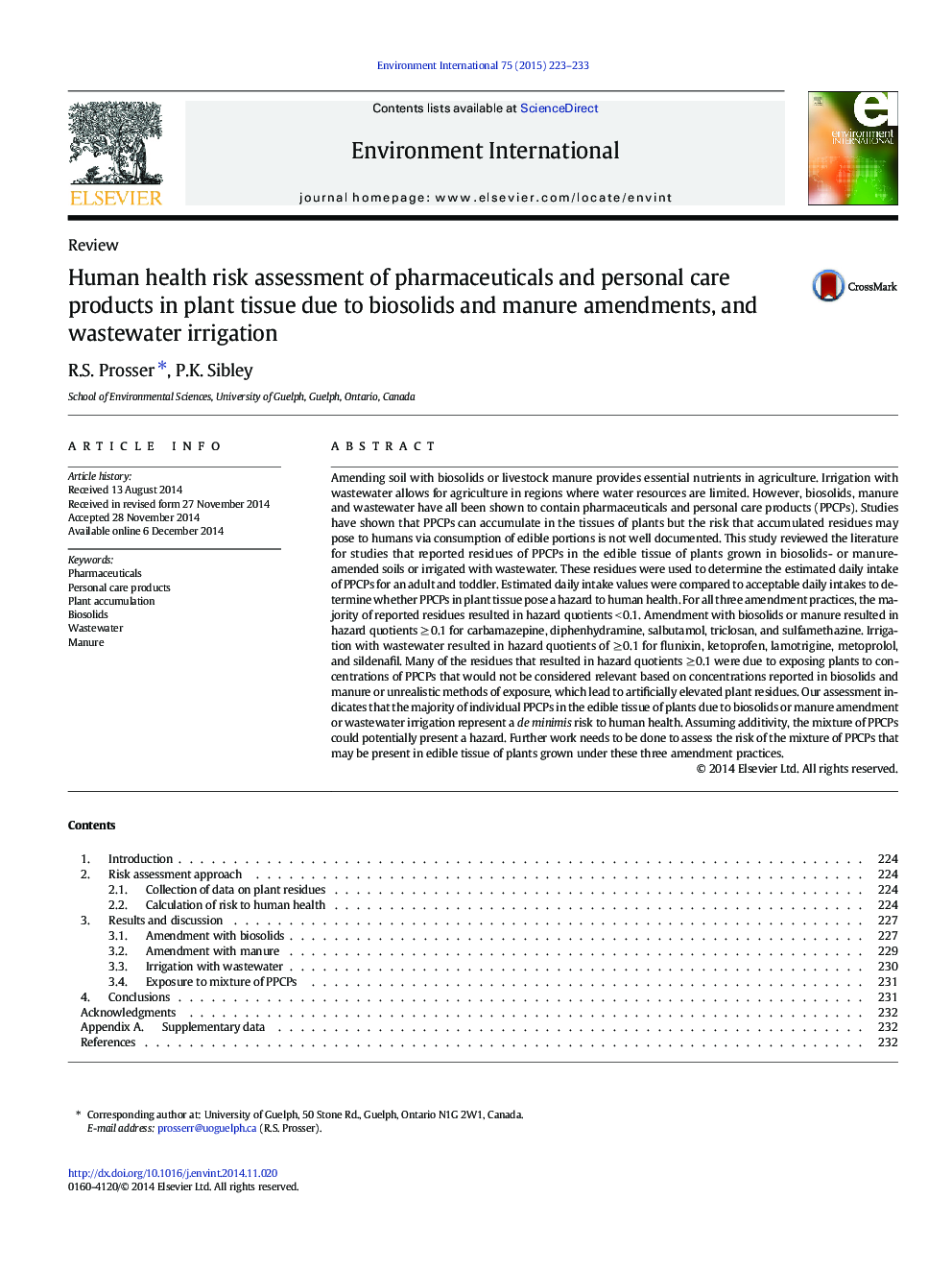| کد مقاله | کد نشریه | سال انتشار | مقاله انگلیسی | نسخه تمام متن |
|---|---|---|---|---|
| 4422711 | 1619053 | 2015 | 11 صفحه PDF | دانلود رایگان |
• Literature reviewed to assess concentrations of PPCPs measured in tissue of plants grown in soil amended with biosolids, manure or wastewater.
• Estimated daily intake determined from residues of PPCPs in edible tissue and compared to acceptable daily intake to determine hazard quotients.
• The majority of hazard quotients were < 0.1, indicating that PPCPs in the edible tissue of plants due represents a de minimis risk to human health.
• Further assessment required to examine the risk of the mixture of PPCPs that may be present in the edible tissue of plants.
Amending soil with biosolids or livestock manure provides essential nutrients in agriculture. Irrigation with wastewater allows for agriculture in regions where water resources are limited. However, biosolids, manure and wastewater have all been shown to contain pharmaceuticals and personal care products (PPCPs). Studies have shown that PPCPs can accumulate in the tissues of plants but the risk that accumulated residues may pose to humans via consumption of edible portions is not well documented. This study reviewed the literature for studies that reported residues of PPCPs in the edible tissue of plants grown in biosolids- or manure-amended soils or irrigated with wastewater. These residues were used to determine the estimated daily intake of PPCPs for an adult and toddler. Estimated daily intake values were compared to acceptable daily intakes to determine whether PPCPs in plant tissue pose a hazard to human health. For all three amendment practices, the majority of reported residues resulted in hazard quotients < 0.1. Amendment with biosolids or manure resulted in hazard quotients ≥ 0.1 for carbamazepine, diphenhydramine, salbutamol, triclosan, and sulfamethazine. Irrigation with wastewater resulted in hazard quotients of ≥ 0.1 for flunixin, ketoprofen, lamotrigine, metoprolol, and sildenafil. Many of the residues that resulted in hazard quotients ≥ 0.1 were due to exposing plants to concentrations of PPCPs that would not be considered relevant based on concentrations reported in biosolids and manure or unrealistic methods of exposure, which lead to artificially elevated plant residues. Our assessment indicates that the majority of individual PPCPs in the edible tissue of plants due to biosolids or manure amendment or wastewater irrigation represent a de minimis risk to human health. Assuming additivity, the mixture of PPCPs could potentially present a hazard. Further work needs to be done to assess the risk of the mixture of PPCPs that may be present in edible tissue of plants grown under these three amendment practices.
Journal: Environment International - Volume 75, February 2015, Pages 223–233
